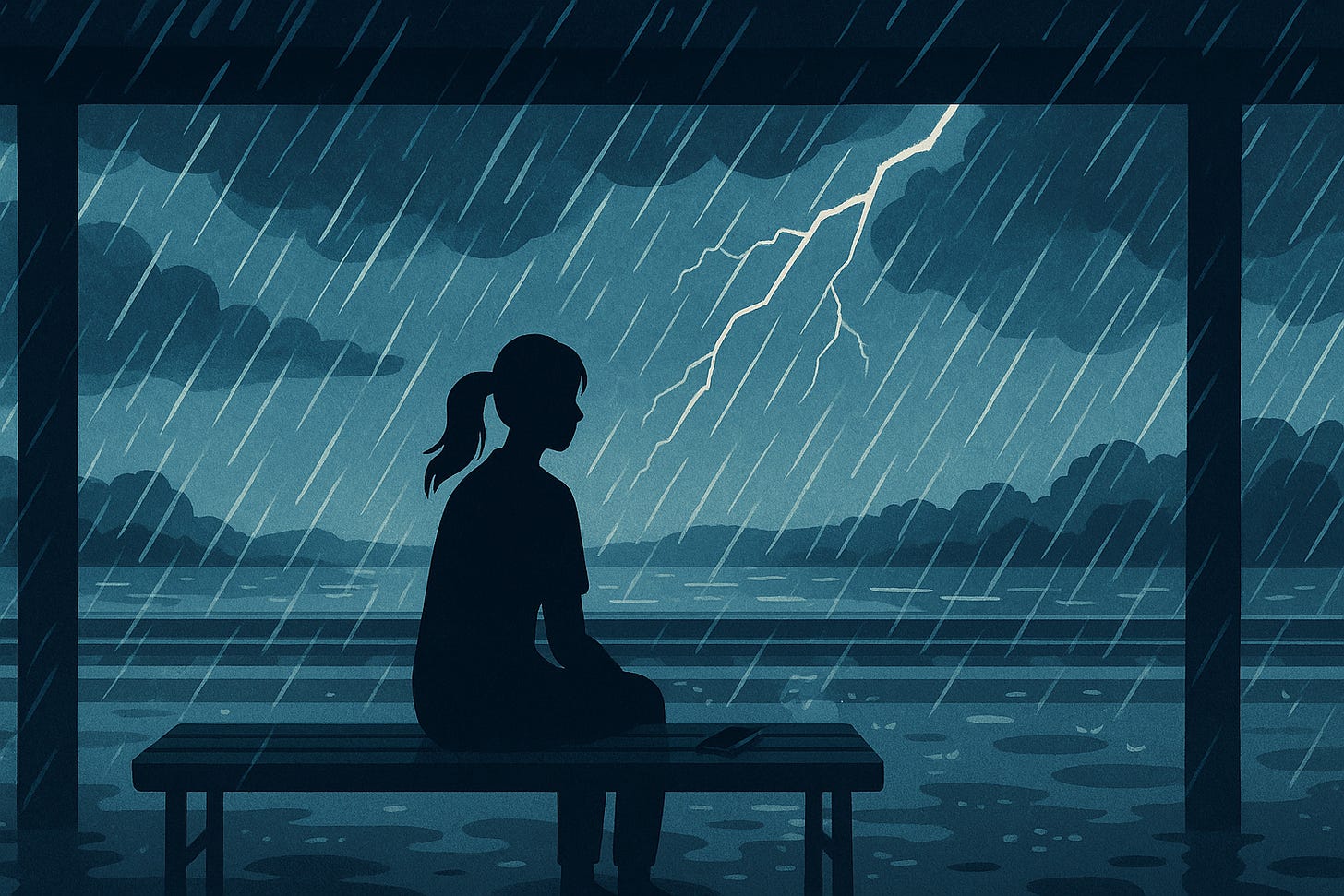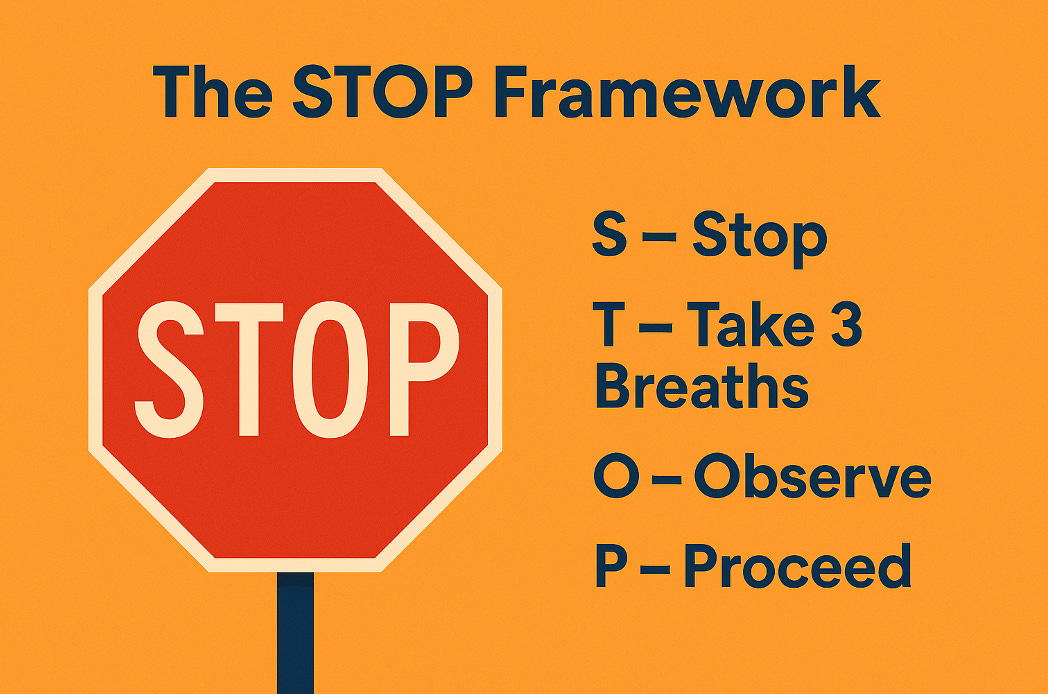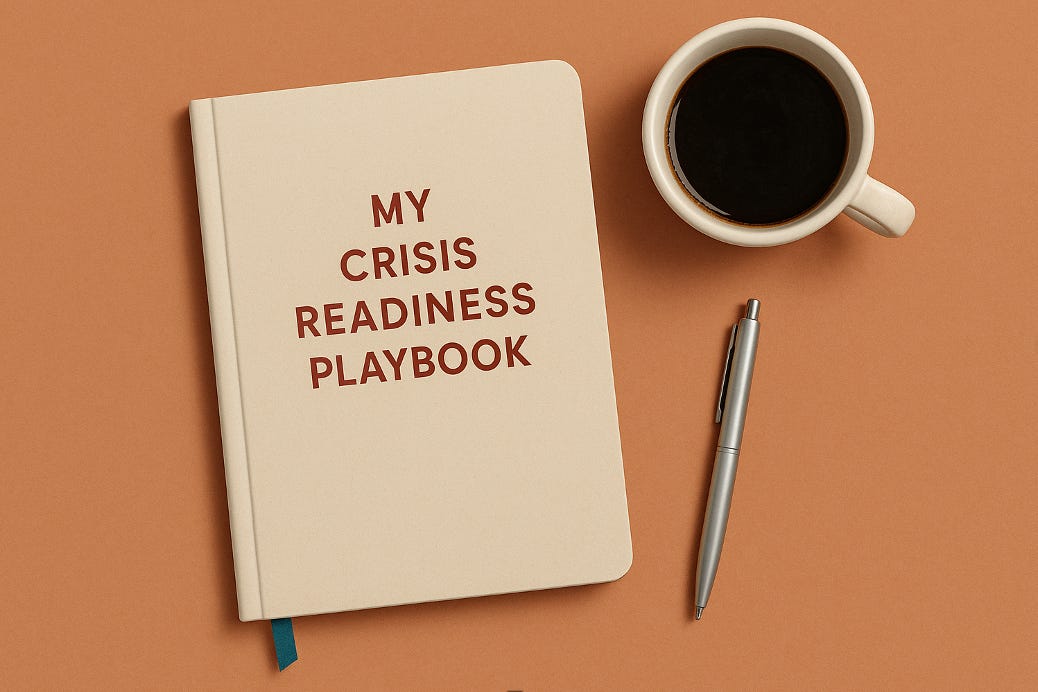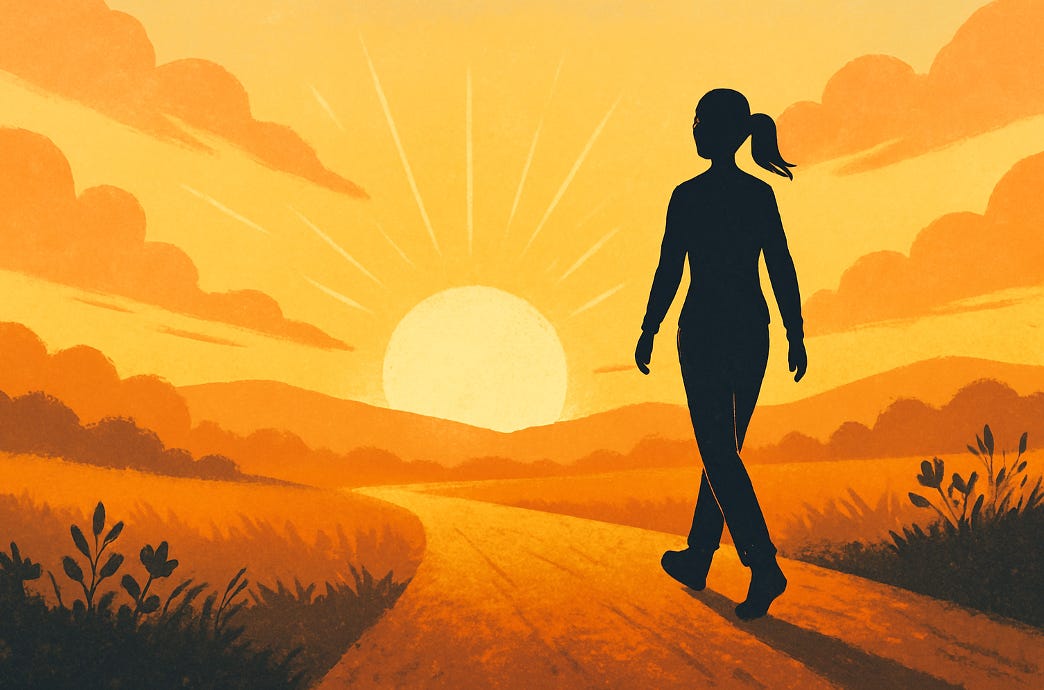We build crisis plans for business. Why not for ourselves?
We can’t crisis-proof life — but we can be better prepared.
As a communications strategist, part of my role involves helping organisations prepare for the unthinkable—planning for crises, managing them when they hit, and guiding recovery efforts.
What if there’s a fire?
A data leak?
A natural disaster?
Fraud?
I’ve built playbooks, drafted crisis communications manuals, mapped escalation protocols, and run simulations. I’ve sat in war rooms with C-suites, called in only after overlooked issues spiralled into full-blown reputational crises—costing not just money, but hard-won trust.
But lately, with everything happening in the world—wars, natural disasters, sudden deaths, mass layoffs, scams—I’ve been grappling with an uncomfortable question:
Why do we dedicate so much time to crisis planning for business, yet rarely apply the same thinking to ourselves?
Often, the most hardest crises are the personal ones.
A sudden family loss.
An unexpected health diagnosis.
Job and financial losses.
Or more existentially: how ready are we for a world increasingly shaped by geopolitical tensions, economic uncertainty, and climate disruption?
In business, we call this crisis preparedness—not prevention. We can’t control what happens, but we can control how ready we are to respond.
Yet, while we spend countless hours building resilience into organisations, we rarely pause to ask the most important question of all:
How prepared am I for life’s inevitable storms?
The times I was caught off guard
In 2009, I found myself caught in the middle of a literal storm—a massive typhoon in rural Japan. Alone at an unmanned train station, the skies darkened as train services ground to a halt. My phone battery had died, and I had no way to reach anyone or figure out my next move.

I remember sitting under that tiny shelter, feeling helpless and wondering: What’s going to happen now? I could only hope someone would come. Thankfully, a colleague did.
Fast forward to 2021, and my family faced a very different kind of storm. On Chinese New Year’s Eve, in the middle of the COVID-19 pandemic, we lost my niece, suddenly and unexpectedly. There are no words to describe that shock and grief. Beyond the emotional devastation, we had to navigate the crushing reality of managing funeral arrangements under lockdowns, during a holiday season when few people were available, compounded by travel restrictions, gathering limitations, and health protocols.
In recent years, many seemingly healthy people have collapsed without warning, leaving their families devastated.
If there’s one thing I’ve learned from standing alone in that typhoon, living through unimaginable family loss, and watching people around me swept away by life’s unpredictability, it is:
The worst time to figure things out… is in the middle of the storm.
What happens when crisis hits?
We like to believe we’ll have time to prepare when the unexpected comes. But life doesn’t always give us that luxury.
Consider these all-too-real scenarios:
Natural disasters: Just months ago, my brother and many others in Bangkok were caught off guard when tremors from a major earthquake in Myanmar shook the city. With ongoing warnings about the long-overdue Nankai Trough earthquake off Japan’s coast—and similar risks elsewhere—it’s not a question of if, but when.
Accidents: Life-altering accidents can happen anytime, anywhere—without warning and with lasting consequences, both for those involved and the people around them.
Health emergencies: Earlier this year, Taiwanese star Barbie Hsu passed away suddenly while travelling in Japan after complications from a severe influenza infection. In the prime of her life—gone in a matter of days. It was a sobering reminder of how fragile life can be.
Financial losses: In the past year alone, scammers siphoned off over US$1 trillion globally. One wrong click, or a sudden market crash, can undo years of hard work and careful planning.
This isn’t about fear—it’s about awareness.
Recently, I sat down with my children and asked them a simple but critical question: “What would you do if someone suddenly collapsed at home and no adult was around?”
It’s easy to assume they would know. But unless we talk them through it, how would they?
How C-Athletes can prepare for unexpected storms
It’s not enough to just have a plan. We also need to train our mindset and our ability to stay calm in stressful situations.
Here’s a simple tool I use whenever life throws me a curveball.

The STOP Framework:
Stop and pause
Take three deep breaths and mindfully rest the mind back into the body
Observe what’s going on right now, notice any thoughts or feelings and bodily sensations
Proceed mindfully with awareness and kindness to yourself and others
The more we practice, the stronger our muscle memory, and the easier it is to activate when it really matters.
Building your crisis readiness playbook
Just like how every well-run organisation has a crisis manual tucked in a drawer, every C-Athlete should have a personal crisis readiness playbook.

Here’s how you can start:
Financial safety nets
Know your essential monthly expenses—housing, food, healthcare.
Check your savings: Do you have at least 6 months of those expenses set aside?
Create a simple “financial essentials” document listing your accounts, insurance policies, and investments.
Family & emergency protocols
Confirm who would take care of your children or dependents if something happens to you.
Ensure you and your loved ones have a valid will and medical directive. If not, commit to setting them up soon.
Store your important documents—both physical and digital—in an accessible location. Tell at least one family member where to find them, and make sure your loved ones do the same.
Digital & data security
Set up a password manager to securely store your critical passwords.
Assign a trusted contact or leave clear instructions for emergency access.
Enable two-factor authentication and set up backup recovery options.
Encourage loved ones to do the same.
Emotional resilience & trusted advisors
Keep a simple list of self-care activities, e.g., walking, meditation, nature, journaling.
Identify 2–3 people you trust for emotional support and life decisions. Keep the connections strong.
Travel emergency preparedness
Keep a small, ready-to-pack travel emergency kit with basic medication, a portable charger, a printed list of emergency contacts, and local currency.
Before every trip, note the nearest embassy or consulate details and save them on your phone and a physical copy.
Share your travel itinerary with a trusted family member or friend.
Carry both digital and printed copies of essential documents.
Will you be ready when the storm comes?

We can’t predict when the next storm will hit. But we can choose whether we’ll meet it scrambling for answers, or standing on steadier ground.
Our playbook doesn’t have to be perfect. We just need to start writing it.
And here’s the upside: when we’ve done what we can, we can free ourselves to live more fully—present, grounded, and less burdened by the what-ifs.
Take that first step today. Start your playbook. Your future self will thank you for it.
If you found this useful, consider sharing it with someone you care about.
With love,
Serina


